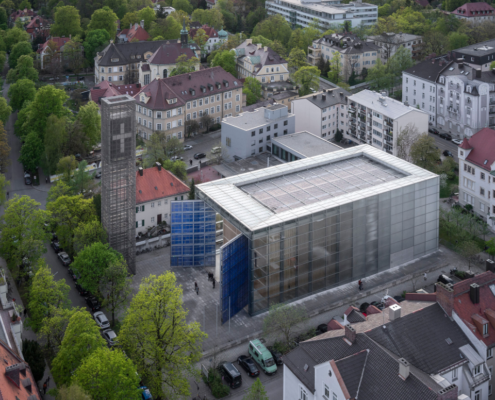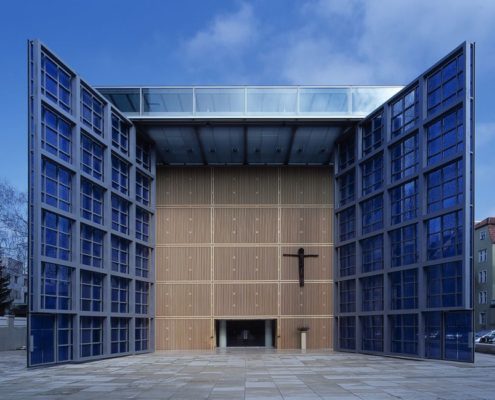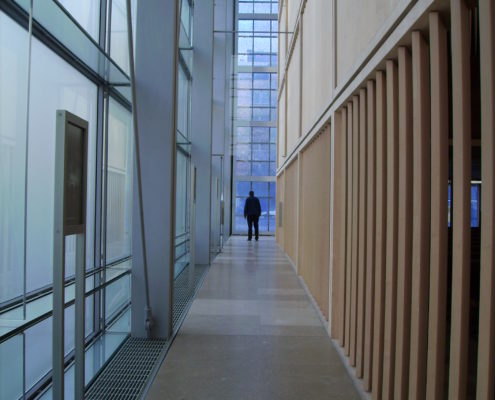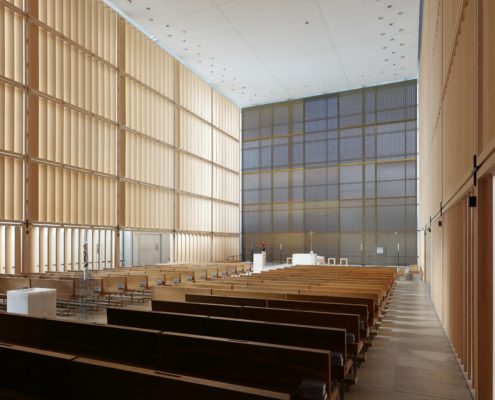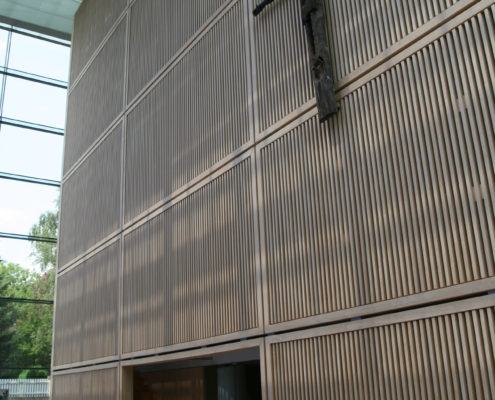The Heart of Jesus Church in Munich is one of several modern church buildings that were completed in Germany at the turn of the millennium. It has been one of the city'slandmarks for more than 15 years and is one of the internationally recognized icons of sacred architecture.
The architectural concept is based on working out and integrating opposites. In the church, transgressing borders is formulated as a strategic principle - transformation and transformation in architecture instead of the use of irrefutable dogmas. The unique cubature of church construction dissolves through an ambiguous, changing surface. The boundary between inside and outside is not definitely given, but set situational. For this purpose, the church was conceived as a space in the room - the inner space is surrounded by a shell of maple lamellas, the outer space is encased in a glass façade. The Heart of Jesus Church implements transcendence in a constructive way: In the space, experiences become possible that lie beyond real sensory perceptions. The decisive factor is the staging of the light. A diffuse brightness characterizes the sacred space, whose source, whose origin remains uncertain due to the arrangement of the two cubes with their contrasting material properties. The entrance portal of the church is formed by two intensely blue glass doors that can be fully opened on special public holidays. They are by Alexander Beleschenko and form the prelude to the religious program of the church, which has been developed together with several artists: The Stations of the Cross between the two cubes of Matthias Wähner, the altar wall of Lutzenberger and Lutzenberger
Information provided in part by: Allmann Sattler Wappner . Architekten

